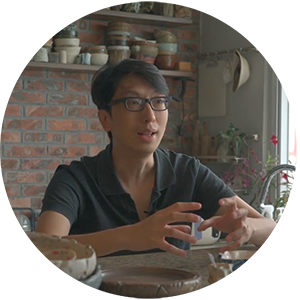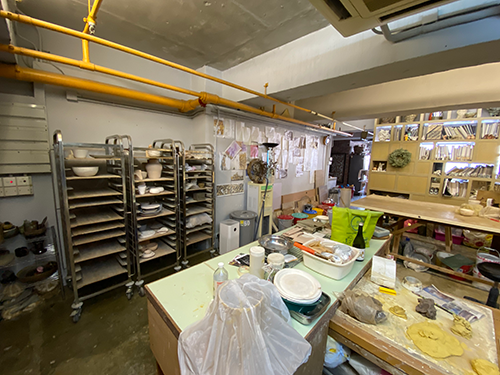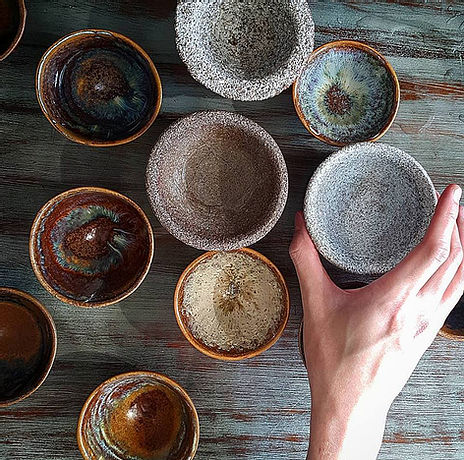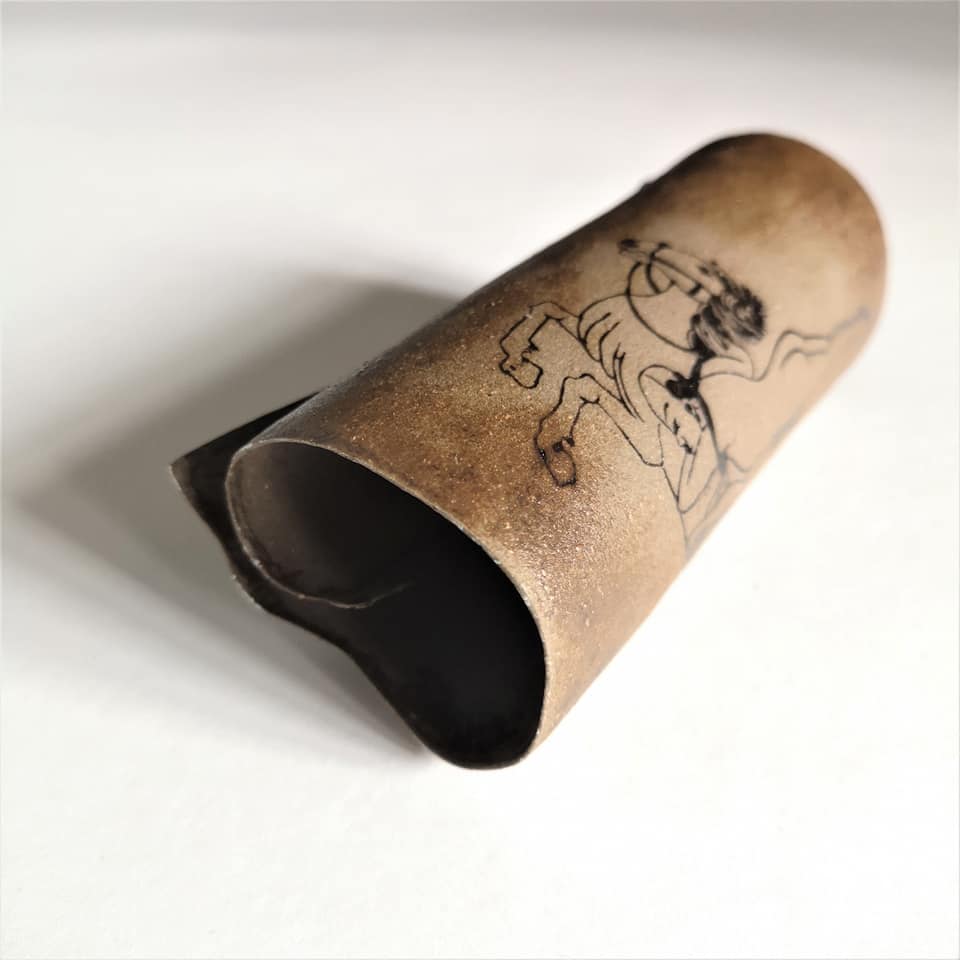藝術家陳思光先後於英國劍橋大學取得學士及碩士學位,曾當上精算師十年,留英時期因初次接觸戶外燒陶,自此被陶泥戲劇性的轉化所吸引,促使他踏上陶藝創作之路。繼後在港修讀香港藝術學院與澳洲皇家墨爾本理工大學合辦的課程,先後完成藝術學士及碩士課程,主修陶瓷。曾多次到訪日本、韓國等藝術家駐留計劃。
藝術家所關注的範圍廣泛,內容涉攝歷史、舞動等題材,與此同時,他壇長對陶泥展開實驗與研究,由釉藥配搭、到利用各種物料混合陶泥燒製,藉此找尋陶瓷多向的特性。其創作題材往往是通過陶泥在燒製時前後的不確定性而展現出來。如作品《Clay Con Moto》中,紙本經泥漿浸染後,在收縮的過程中不規則地捲曲,陳思光藉著陶泥物理狀態聯想人體舞動的神態。作為陶泥的實驗者,這種由陶泥的物理變化連繫到歷史甚至是精神性的脈絡下,正是作品的可觀之處。
Artist Ray Chan See-Kwong received the bachelor and master degree upon graduation from the Cambridge University. He has been an Actuary for ten years and encountered Raku firing when he stayed in England. Since then, he was deeply mesmerized and attracted by the dramatic transformation of ceramics. That’s when he ventured out for ceramics practice. Afterwards, he graduated from HK Art School (RMIT), completed the Bachelor and Master of Art and majored in ceramics. He has also visited Japan, Korea through artist in residence programme.
Ray concerned about a wide range of content including history, dance etc. At the same time, he proficiently conducted experiments and research from glaze formula to using different materials for ceramics firing, in an attempt to find out the multi-directional property of ceramics. These themes were usually exhibited through firing and its uncertainty. As shown in 《Clay Con Moto》, after the paper is soaked with clay slip, it becomes curly twirls. Ray uses the physical changes of shrinkage to associate with the appearance of a dancing body. As an experimenter of ceramics, the physicality of materials can correlate to history or even the spirituality of ceramics, that’s exactly the significant feature of the art.





